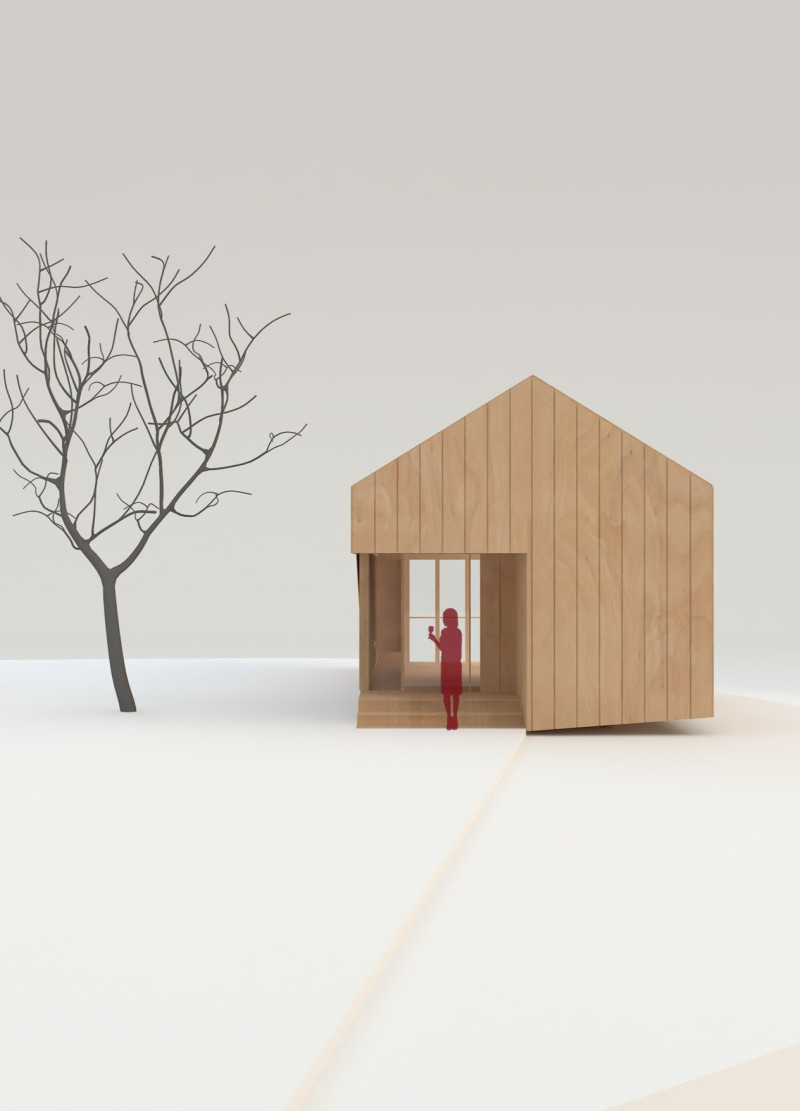5 key facts about this project
The SEN-ROOM serves multiple functions, incorporating spaces for observing, smelling, and tasting wine, organized into a coherent flow that guides visitors through the experience. The architectural design fosters engagement with wine and the environment, ultimately enhancing the relationship between the consumer and the product.
The spatial configuration begins with an area designed for visual engagement, where natural light emphasizes the wine's color and presentation. This leads into a transitional space focusing on scent, designed to enhance the discovery of the wine's aroma. Finally, the tasting area culminates in an open terrace that offers panoramic views of the vineyard landscape, allowing guests to experience the natural beauty while sampling the wines.
Unique Design Approaches
One of the distinctive features of the SEN-ROOM is its emphasis on a sensory sequence—look, smell, and taste—creating a narrative that engages visitors in a multi-dimensional exploration of wine. This approach is not common in traditional wine tasting facilities, which often focus solely on the tasting experience without considering the broader sensory context.
The pavilion integrates natural materials such as timber, glass, and concrete, which are selected not only for their functional properties but also for their ability to create a warm and inviting atmosphere. Timber forms the primary structure, providing a tactile connection to nature, while glass enhances the overall transparency and interaction with the scenic views. Concrete contributes to the durability and stability of the design.
The layout is intentionally designed to facilitate seamless movement between different sensory experiences, with an emphasis on user interaction. The alignment of spaces encourages exploration and enhances the overall experience, making it an educational tool for visitors.
Spatial Configuration and Material Use
The SEN-ROOM’s architectural design prioritizes a logical flow that aligns with the sensory journey. The pavilion includes key areas such as an entrance, a wine service area, modular wine tasting tables, and a covered terrace. Each section is carefully planned to ensure that visitors can fully engage with the wine in an environment reflective of its origin.
The use of natural light through large glass openings not only illuminates the interior but also creates visual connections to the vineyard, blending the structure with its context. The careful selection of materials—timber for warmth, glass for visibility, and concrete for foundational integrity—ensures functionality while promoting aesthetic coherence.
The SEN-ROOM project illustrates how thoughtful architectural design can enhance the wine tasting experience by fostering a connection to both the product and its environment. To explore the full potential of this architectural endeavor, including architectural plans and sections, interested parties are encouraged to examine the detailed project presentation for a deeper understanding of its design elements and spatial organization.


























